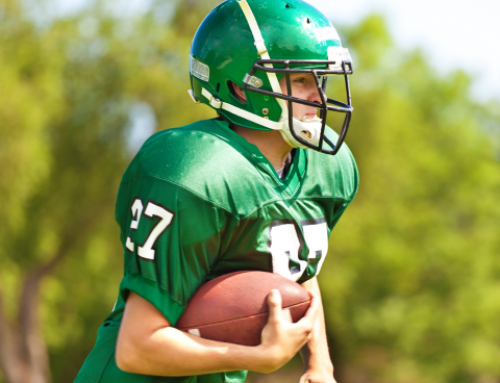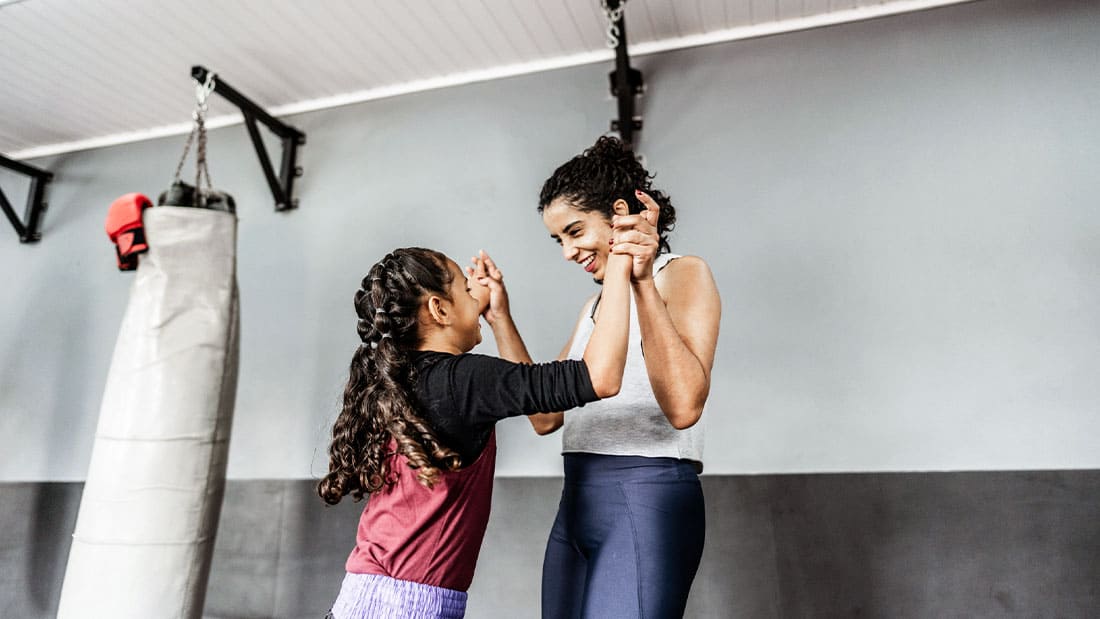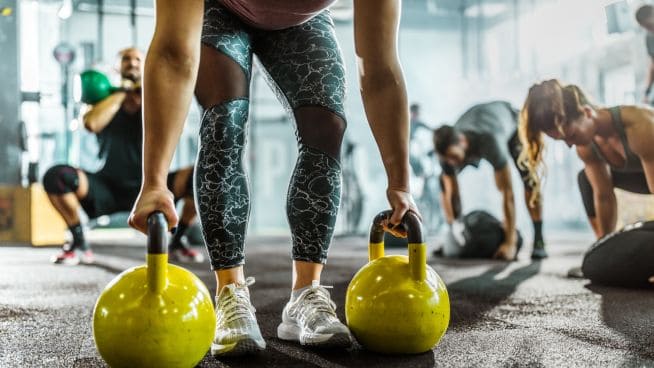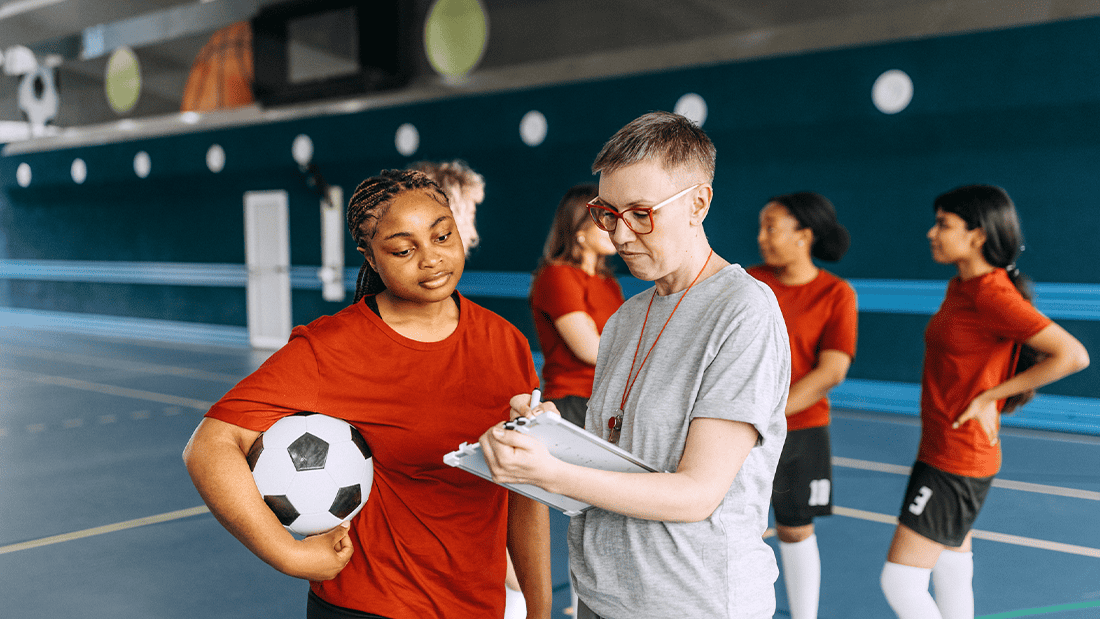Tips for Working Out With a Hand or Arm Injury
Sticking to a demanding workout schedule can be especially tough when you have a hand or arm injury. But if you’ve jammed a finger playing flag football or hurt your shoulder in a game, there are things you can do to work around your injury and stay on track.
The idea is to reduce tension in surrounding muscles, which might be hindering your overall range of motion and reducing your range of motion in specific areas, and to work within your capacity.
Reduce Tension in Surrounding Muscles
[youtube video=”v17Jhzsa1zg” /]Treating the right trigger points, as this video shows, can reduce tension around injured area. Trigger points—taut muscle areas that can be hyperirritable—come in two forms:
Active Trigger Points can be painful even if you don’t touch them. You might feel the pain with movement, or the trigger can restrict movement rather than cause pain, telling your brain that something’s not right and signaling it to take caution.
Latent Trigger Points are triggered by touch applied to the muscle. This occurs after an injury and is eased by treatment with manual therapy.
RELATED: Anatomy, Treatment and Rehab for a Biceps Tendon Injury
Reduce Range of Motion
More often than not, a chronic injury can be made worse in the weight room when there’s a lot of stress on the shoulders.
With this in mind, reducing range of motion with any pushing exercise will help prevent irritation at the skeletal or muscular level and train the muscles to adapt so you can maintain strength, power and size while you recover.
[youtube video=”bnLgwk0PLFI” /]With the Dumbbell Floor Press, you effectively shorten the range of motion required for a typical Dumbbell Bench Press but maintain the benefits of a pushing movement pattern and an increased load for the pec major, anterior delts and triceps.
Work Within Your Capacity
Depending on the severity of an injury, improvement sometimes come with rest and recovery. With a unilateral exercise, you can train your unaffected limb and maintain neurological strength in the affected limb. Approximately 10 to 20 percent of your strength may transfer from limb to limb.
[youtube video=”efchxULAT6M” /]Other times, injury may compromise your grip. If this is the case, you can still use equipment to train the muscles up the chain—the biceps, shoulders, rhomboids, traps and pecs—by holding a strap with your forearm and avoiding use of your hand.
References:
- Dommerholt, Jan. “Dry needling-peripheral and central considerations.” Journal of Manual & Manipulative Therapy 19.4 (2011): 223-227.
- Fimland, Marius S., et al. “Neural adaptations underlying cross-education after unilateral strength training.” European Journal of Applied Physiology 107.6 (2009): 723-730.
- Munn, Joanne, et al. “Training with unilateral resistance exercise increases contralateral strength.” Journal of Applied Physiology, 99.5 (2005): 1880-1884.
RECOMMENDED FOR YOU
MOST POPULAR
Tips for Working Out With a Hand or Arm Injury
Sticking to a demanding workout schedule can be especially tough when you have a hand or arm injury. But if you’ve jammed a finger playing flag football or hurt your shoulder in a game, there are things you can do to work around your injury and stay on track.
The idea is to reduce tension in surrounding muscles, which might be hindering your overall range of motion and reducing your range of motion in specific areas, and to work within your capacity.
Reduce Tension in Surrounding Muscles
[youtube video=”v17Jhzsa1zg” /]Treating the right trigger points, as this video shows, can reduce tension around injured area. Trigger points—taut muscle areas that can be hyperirritable—come in two forms:
Active Trigger Points can be painful even if you don’t touch them. You might feel the pain with movement, or the trigger can restrict movement rather than cause pain, telling your brain that something’s not right and signaling it to take caution.
Latent Trigger Points are triggered by touch applied to the muscle. This occurs after an injury and is eased by treatment with manual therapy.
RELATED: Anatomy, Treatment and Rehab for a Biceps Tendon Injury
Reduce Range of Motion
More often than not, a chronic injury can be made worse in the weight room when there’s a lot of stress on the shoulders.
With this in mind, reducing range of motion with any pushing exercise will help prevent irritation at the skeletal or muscular level and train the muscles to adapt so you can maintain strength, power and size while you recover.
[youtube video=”bnLgwk0PLFI” /]With the Dumbbell Floor Press, you effectively shorten the range of motion required for a typical Dumbbell Bench Press but maintain the benefits of a pushing movement pattern and an increased load for the pec major, anterior delts and triceps.
Work Within Your Capacity
Depending on the severity of an injury, improvement sometimes come with rest and recovery. With a unilateral exercise, you can train your unaffected limb and maintain neurological strength in the affected limb. Approximately 10 to 20 percent of your strength may transfer from limb to limb.
Other times, injury may compromise your grip. If this is the case, you can still use equipment to train the muscles up the chain—the biceps, shoulders, rhomboids, traps and pecs—by holding a strap with your forearm and avoiding use of your hand.
[youtube video=”Tb9w8T6Z7HY” /] [youtube video=”GqNm8pq9_9Q” /]References:
- Dommerholt, Jan. “Dry needling-peripheral and central considerations.” Journal of Manual & Manipulative Therapy 19.4 (2011): 223-227.
- Fimland, Marius S., et al. “Neural adaptations underlying cross-education after unilateral strength training.” European Journal of Applied Physiology 107.6 (2009): 723-730.
- Munn, Joanne, et al. “Training with unilateral resistance exercise increases contralateral strength.” Journal of Applied Physiology, 99.5 (2005): 1880-1884.










